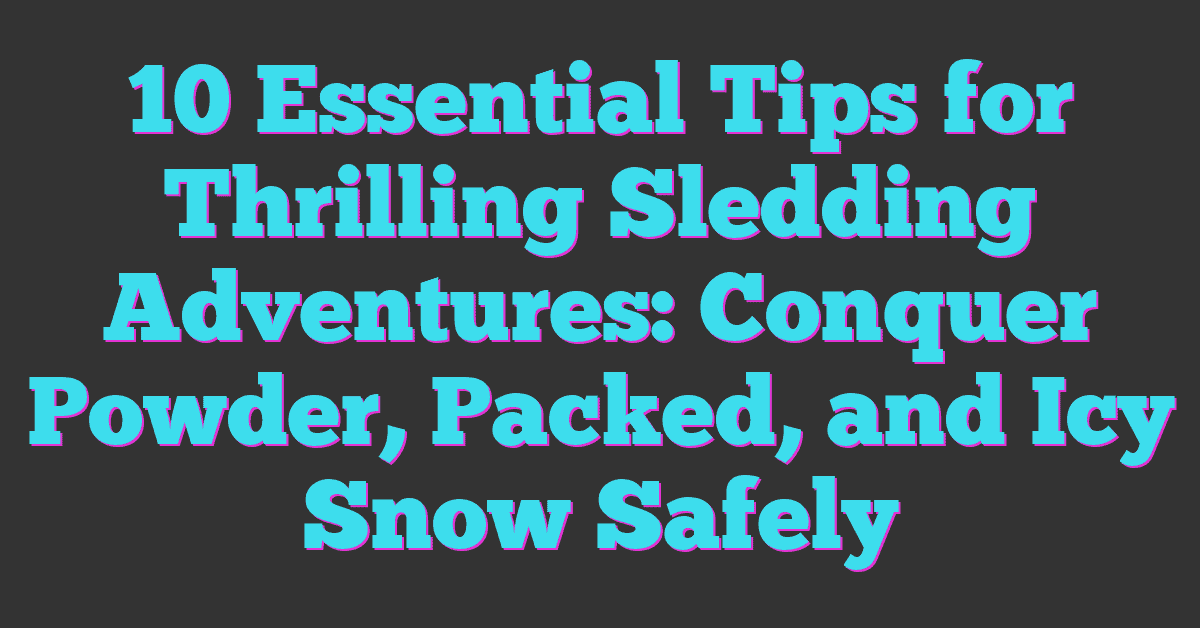Skiing is one of my favorite ways to embrace winter, but let’s be honest—it’s not without its risks. Whether you’re carving down steep slopes or cruising on gentle trails, your knees take a lot of the impact. One wrong move, and you could be dealing with anything from a minor bruise to a serious injury. That’s where knee pads come into the picture.

I’ve often wondered if knee pads are more of a safety essential or just an extra layer of gear. Do they really make a difference, or are they just overkill for most skiers? If you’re like me and want to protect your knees without feeling weighed down, it’s worth exploring whether knee pads are the right fit for your skiing adventures. Let’s dive into what makes them useful and who might benefit the most.
Why Knee Pads Are Important for Skiers
As an avid skier, I’ve seen how much strain skiing puts on the knees. Whether carving down slopes or taking on jumps, knee pads can make all the difference in keeping this crucial joint safe and functional.
Protecting Your Knees from Injuries
Knee pads act as a barrier against impact and stress. Collisions, falls, or even sharp twists during quick turns can lead to ligament tears, bruising, or fractures. I’ve witnessed friends deal with ACL injuries that could’ve been minimized or avoided with the right protection. Knee pads cushion impacts and provide support, reducing the risk of long-term issues.
For freestyle or park skiers, falls on hard, icy surfaces are common. Padding absorbs shock and safeguards the knees from direct hits. Even beginner skiers benefit, as protecting knees during unexpected falls helps build confidence on the slopes.
Enhancing Performance on the Slopes
Knee pads don’t just protect; they also improve performance. Good-quality pads improve stability and alignment. With knees supported, I feel more controlled during high-speed runs or challenging terrains. Less strain also means skiing for longer without discomfort.
Some models offer compression, improving blood flow and reducing muscle fatigue. After long days on the mountain, my knees feel fresher when I wear padded support.
Types of Knee Pads for Skiers
As someone passionate about skiing, I know the right gear can make or break a day on the slopes. Knee pads come in various types, each designed to suit different styles of skiing and levels of protection.
Hard-Shell Knee Pads
Hard-shell knee pads provide maximum protection with a rigid outer shell covering the knee. They’re ideal for freestyle skiers and park enthusiasts tackling rails, jumps, and hard-packed landings. The tough exterior shields against impacts, while the inner padding absorbs shock during falls or collisions. I’ve seen these used most often by skiers pushing the limits in terrain parks or competition settings, where extra safety is critical.
Soft-Shell Knee Pads
Soft-shell knee pads offer flexibility and lightweight comfort. They’re made of dense foam and stretchable fabric, making them suitable for skiers prioritizing mobility over heavy-duty protection. I prefer these on casual ski days or when I’m exploring new terrain and need lightweight support. They provide decent protection against minor falls and bumps without restricting movement, perfect for carving through fresh powder or cruising groomed runs.
Knee Sleeves
Knee sleeves focus on support and warmth, with compression features enhancing stability and circulation. These work best for skiers managing existing knee issues or those seeking extra joint support during long days on the mountain. I often wear mine on colder days to keep my knees warm and reduce fatigue after hours on challenging slopes. While they’re not designed for high-impact protection, they help with comfort and endurance.
Benefits of Wearing Knee Pads While Skiing
I’ve always found skiing thrilling, but I also know the strain it puts on my knees. Wearing knee pads adds a layer of safety and comfort, making every run more enjoyable.
Injury Prevention
Knee pads act as a shield against impacts, twists, and falls. Skiing exposes knees to sudden movements and hard surfaces, increasing the risk of ligament damage and bruises. I’ve noticed they’re especially helpful during unexpected falls on icy or uneven terrain. For freestyle tricks or navigating moguls, the reinforced protection provides peace of mind that my knees can handle the sport’s demands.
Added Comfort and Support
The right knee pads enhance skiing comfort by offering cushioning and stability. Compression features lessen muscle fatigue, and the padding reduces strain on the joints during long sessions. I’ve found that knee sleeves with compression improve circulation and keep my knees warm in freezing temperatures, helping me stay comfortable throughout the day.
Boosting Confidence on the Slopes
Wearing knee pads boosts my confidence, letting me focus on improving technique rather than worrying about potential injuries. For beginners or those trying new challenges like park features or steep runs, that extra protection can make all the difference. I feel more secure when I know my gear has me covered, which helps me push my limits without hesitation.
How to Choose the Right Knee Pads
Selecting the right knee pads ensures both safety and enjoyment on the slopes. I always focus on fit, material, and protection level to find the ones that match my skiing needs.
Fit and Comfort
Proper fit maximizes both comfort and functionality. Knee pads should sit snugly without sliding or causing pressure points. I appreciate designs with adjustable straps or silicone grippers that keep pads securely in place. When trying them on, I bend and move to mimic skiing motions. A comfortable fit allows for full range of motion, ensuring I stay focused on carving perfect turns.
Material and Durability
Material affects both weight and longevity. High-quality options use moisture-wicking fabrics that stay dry and breathable, even after hours on the mountain. I prefer knee pads with reinforced outer layers, like ballistic nylon or flexible hard shells, which handle impacts and abrasions well. Durability matters most for skiers like me who tackle challenging terrains frequently.
Level of Protection
Protection levels depend on skiing style and conditions. For freestyle tricks or mogul runs, I choose knee pads with added padding or hard-shell plates that absorb direct impacts and guard against sharp edges. Softer options, like cushioned sleeves, work better when I’m cruising groomed trails or seeking warmth and moderate support. Evaluating risk factors and skiing intensity guides my choice in protection.
Do All Skiers Need Knee Pads?
Knee pads offer protection and support on the slopes, but not all skiers may find them necessary. Whether someone needs them depends on their skiing style, skill level, and the risks they’re exposed to.
Recreational Skiers vs. Professional Skiers
Recreational skiers often prioritize comfort and ease during their runs. For those sticking to groomed trails at moderate speeds, knee pads might not feel like a must-have. That said, I’ve seen beginners benefit from wearing soft pads or knee sleeves, especially as they work on their form and experience occasional falls.
Professional skiers, on the other hand, deal with high-speed descents, challenging terrain, and advanced tricks. For me, hitting steep slopes or freestyle jumps means more chances of impact and stress on my knees. Hard-shell knee pads or heavy-duty designs can be game-changers for safety and confidence in these scenarios. They’re almost essential when performing at elite levels or tackling extreme conditions.
Risk Factors to Consider
Several risks can influence whether knee pads are a good fit. If icy patches or uneven terrain are common, knee pads can prevent injuries during unexpected spills. I also pay extra attention when skiing moguls, as rapid twists can strain my knees—compression sleeves or padded supports help mitigate this risk.
Previous injuries or chronic knee pain are other major considerations. Having hurt my knee a few years back, I now always ski with added support to reduce strain and keep joints secure. Depending on your experience and health, knee pads might add that extra layer of protection where it’s needed most.
Conclusion
Skiing is an incredible sport that challenges both our skills and our limits, but it’s important to prioritize safety and comfort on the slopes. Knee pads may not be for everyone, but they offer undeniable benefits for those looking to protect their knees and boost their confidence. Whether you’re a beginner, a freestyle enthusiast, or tackling tough terrain, the right knee pads can make a world of difference.
Ultimately, it comes down to understanding your needs and choosing the gear that helps you enjoy skiing to the fullest. Protect your knees, stay comfortable, and keep chasing those thrilling runs!
















